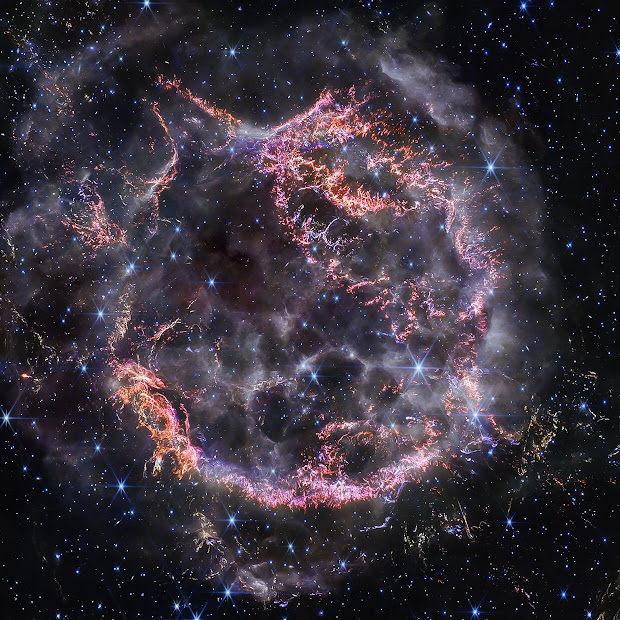Click the image for higher resolution (3.4 MB)
A new high-definition image from the James Webb Space Telescope's NIRCam (Near-Infrared Camera) unveils intricate details of supernova remnant Cassiopeia A (Cas A), and shows the expanding shell of material slamming into the gas shed by the star before it exploded.
The most noticeable colours in Webb's newest image are clumps of bright orange and light pink that make up the inner shell of the supernova remnant. These tiny knots of gas, composed of sulphur, oxygen, argon, and neon from the star itself, are only detectable thanks to NIRCam's exquisite resolution, and give researchers a hint at how the dying star shattered like glass when it exploded.
The outskirts of the main inner shell look like smoke from a campfire. This marks where ejected material from the exploded star is ramming into surrounding circumstellar material. Researchers have concluded that this white colour is light from synchrotron radiation, which is generated by charged particles travelling at extremely high speeds and spiralling around magnetic field lines.
There are also several light echoes visible in this image, most notably in the bottom right corner. This is where light from the star's long-ago explosion has reached, and is warming, distant dust, which glows as it cools down.
Image Credit: NASA, ESA, CSA, STScI, D. Milisavljevic (Purdue University), T. Temim (Princeton University), I. De Looze (University of Gent)
Image enhancement: Jean-Baptiste Faure










0 comment(s):
Post a Comment